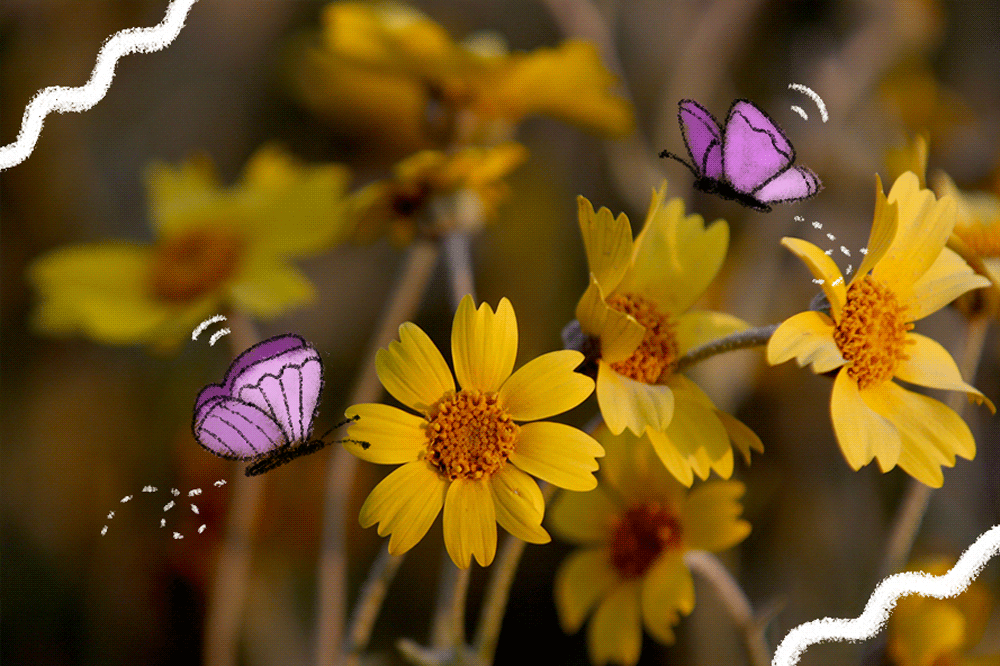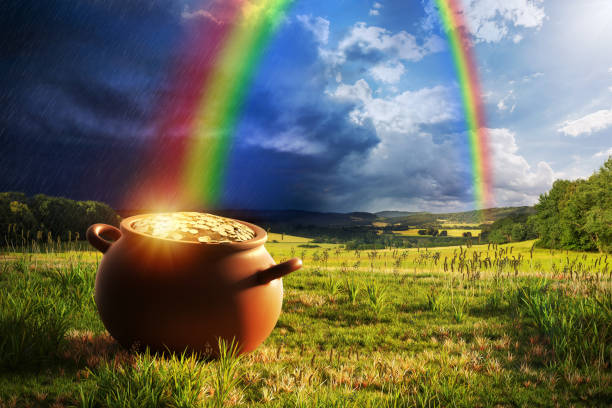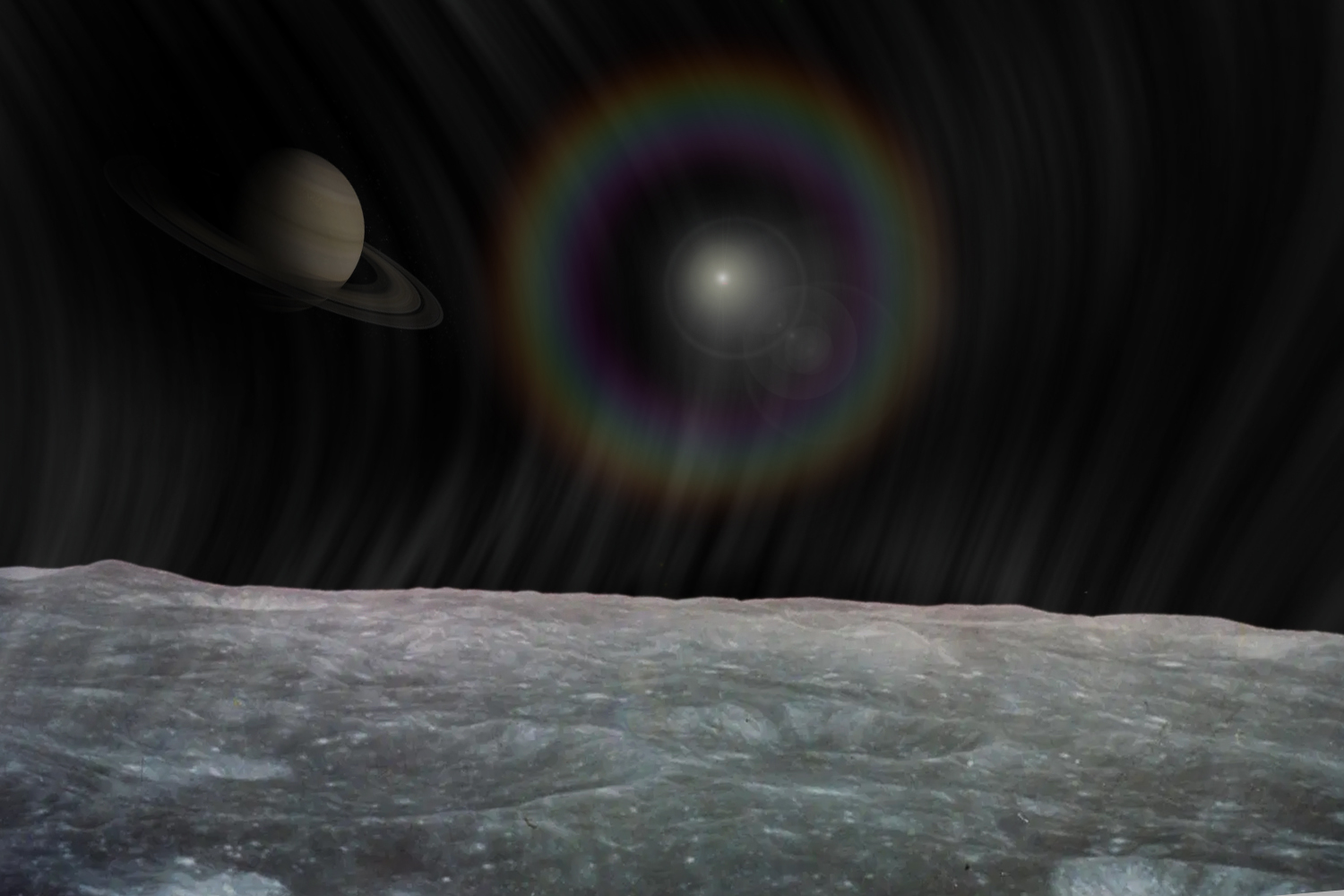What occurs when there is too much rain? What happens when there is too little?

When there is too much rain, flooding can occur. When there is too little, droughts occur.
Parched ground is actually less likely to absorb water and increases the risk of dangerous flash floods. Soil is, counterintuitively, at its most absorbent when it’s a little bit damp. When it’s really dry and when it’s really wet it’s actually difficult to get water into the soil. A little bit of water changes its porosity—creating holes and pathways that allow more water to be absorbed. That’s partly because of surface tension—the way water molecules stick together to form droplets, which may then be too big to filter through the gaps in the dried-out soil. In slightly damper soil, the moisture breaks the surface tension of those same droplets, allowing them to combine with what water is already in the soil and more easily find a path to flow down.
What season are you the least likely to see a rainbow during?

Winter
You are less likely to see a rainbow in the winter – but why? Because of snow! A rainbow is the result of light passing through a spectrum – in most cases, a collection of raindrops – and, therefore, having that light broken up and refracted into individual colors. In the winter months, however, temperatures in the upper atmosphere drop to freezing, causing the raindrops to freeze into snow. This blocks the light from passing through the drop (or the snowflake) and prevents the appearance of a rainbow.
What day is April Fools every year?

April 2nd...just kidding, April 1st!
Some historians believe France is responsible for the humorous tradition, tying it to a calendar change in 1582, according to the History Channel. That year, France implemented the Gregorian calendar, shifting the start of the New Year from the spring equinox, which usually falls around April 1, to January 1. After the change, people who wrongly celebrated the new year in late March and early April were called "April fools."
What do butterflies eat?

Most feed on nectar from flowers.
Because of their straw-like mouthparts, butterflies are mainly restricted to a liquid diet. Butterflies use their proboscis to drink sweet nectar from flowers. Nectar sometimes resides deep within a flower and the proboscis allows the butterfly to reach this sugary treat. Butterflies have also been known to get their vital nutrients from rotten fruits and the blood of dead animals, though!
What are some creatures that attracted to flowers?

Bees, butterflies, hummingbirds, bats, small mammals, various other insects.
Butterflies might be more attracted to your weeds than your flowers. Colorful blooms aren't the chief reason these insects love your garden – it's more about the fragrance and nectar. According to the Smithsonian Institute, new cultivars of popular flowers have been bred for enhanced color and size, but have often lost their fragrance in the process. So everyday weeds, like dandelions and clovers, might actually be the most appealing things in your yard to butterflies (they hate pesticides, too). Taking care to choose heirloom flower seeds can get them to also fly your way.
True or False: It takes about 2 minutes for a raindrop to reach the ground once it has formed.

True!
While the height at which raindrops fall from the clouds varies, they descend toward the ground at an average speed of 14 mph. If we assume the clouds are located at an altitude of 2,500 feet, that means according to data it would take a raindrop just over 2 minutes to reach the surface. Larger raindrops can fall as fast as 20 mph, while the smallest raindrops might take up to 7 minutes to tumble toward the ground.
True or False: You can never reach the end of a rainbow.

Why or why not?
True!
If you’re the type who goes hunting for a pot of gold every time you see a rainbow, we can save you some trouble: you can never actually get to the end of a rainbow! Because a rainbow is based on the orientation of the observer (you) and the light source (the sun), when you move, the rainbow will move, too.
True or False: Ancient Romans had a holiday called Hysteria, which was very similar to April Fools’ Day!

False, it was actually called Hilaria!
The Hilaria (in Latin, "the cheerful ones", a term derived from the borrowed adjective Ancient Greek for "cheerful" and "merry") were ancient Roman religious festivals celebrated on the March equinox to honor Cybele. The term seems originally to have been a name which was given to any day or season of rejoicing. The hilaria were, therefore, according to Maximus the Confessor either private or public. Among the former, he thinks it the day on which a person married, and on which a son was born; among the latter, those days of public rejoicings appointed by a new emperor. Such days were devoted to general rejoicings and public sacrifices, and no one was allowed to show any symptoms of grief or sorrow.
True or False: Butterflies have six wings.

False, they have four!
Butterflies have four wings which are brightly coloured and patterned. Butterfly wings are covered in tiny scales and they are the only insects with scaly wings. Each scale on a butterflies wings are a single colour, either red, yellow, black or white. Butterfly colours, including green and blue, are created by light refracting (bending) on the butterfly’s wings. The patterns and colours on a butterfly wings are symmetrical and as the butterfly grows older, its wings fade and become ragged.
True or false: Trees are the longest living organisms on earth.
True!
Trees can live anywhere from less than 100 years to more than a few thousand years depending on the species. However, one species in particular outlives them all. The Great Basin Bristlecone Pine (Pinus longaeva) has been deemed the oldest tree in existence, reaching an age of over 5,000 years old.
Which place on Earth has never seen rain?
a. Atacama Desert in Chile
b. McMurdo Dry Valleys of Antarctica
c. Death Valley in the United States
d. Aswan in Egypt
b. McMurdo Dry Valleys of Antarctica
The Atacama Desert in northern Chile and southern Peru is the driest spot on Earth based on meteorological observations. It averages only 0.019 inches (0.5 millimeters) of rainfall annually, according to Guinness World Records. NASA says it's the driest non-polar desert on the planet. However, scientists believe there is an even drier spot: the McMurdo Dry Valleys of Antarctica, where some areas have never seen a single rain drop of precipitation in Earth's history. Both of these deserts are so dry and inhospitable that the same tools showing no life on Mars in the 1970s also showed no life in both of these locations on Earth.
What colors are in a rainbow?

Red, Orange, Yellow, Green, Blue, Indigo and Violet or ROYGBIV!
Rainbows occur when the light radiated from the sun. comes into contact with water droplets in the atmosphere. So, how dose the light travel through the water droplets and create seven-colored rainbows? Rainbows appear in seven colors because water droplets break sunlight into the seven colors of the spectrum. You get the same result when sunlight passes through a prism. The water droplets in the atmosphere act as prisms, though the traces of light are very complex.
What is April Fools known as in France?
a. Omlette du Fromage
b. Poisson d'Avril
c. Idiote d'Avril
d. Homme Drole
b. Poisson d'Avril
Alongside Easter, French children follow April Fools’ Day traditions in Spring. On 1 April, people use paper fish to play an April Fools trick. This involves sticking a paper fish onto the back of as many adults as possible. And then running away yelling, “Poisson d’Avril !” (April Fish!). Yes, you better check your back if you happen to be in France on that day!
What is the series of major changes that a butterfly undergoes throughout it's life?
a. Transmogrification
b. Metamorphosis
c. Rebirth
d. Mutation
b. Metamorphosis
Metamorphosis is a series of major changes in an animal’s body form as it moves through its life cycle. Butterflies and moths undergo a complete metamorphosis, which means there are four separate stages in the life cycle (egg, larva, pupa, and adult). Each stage looks completely different and serves a different purpose in the life of the insect.
What have scientific studies found is a plant's favorite type of music?
a. Disco
b. Blues
c. Classical
d. Rock & Roll
c. Classical
Plants really do respond to sound. Talking to plants to help them grow is a well-known old gardeners tale, but studies have shown vibration (like music, or perhaps even the sweet sound of your voice) can affect plant growth.
What order does the water cycle go in?
1. Condensation
2. Evaporation
3. Runoff
4. Precipitation
1. Evaporation
2. Condensation
3. Precipitation
4. Runoff
The water cycle describes how water evaporates from the surface of the earth, rises into the atmosphere, cools and condenses into rain or snow in clouds, and falls again to the surface as precipitation. The water falling on land collects in rivers and lakes, soil, and porous layers of rock, and much of it flows back into the oceans, where it will once more evaporate. The cycling of water in and out of the atmosphere is a significant aspect of the weather patterns on Earth.
How is a rainbow formed? What are some other conditions in which rainbows form besides rain?

Rainbows are formed when light from the sun is scattered by water droplets (e.g. raindrops or fog) through a process called refraction. Refraction occurs when the light from the sun changes direction when passing through a medium denser than air, such as a raindrop. Rainbows normally appear from the rain, but can also be seen in other places water drops appear such mist, fog, spray, waterfalls, and dew.
What network aired a April Fools special showing spaghetti growing from Spaghetti Trees?

The BBC!
In 1957, BBC’s Panorama ran a news segment about that year’s “exceptionally heavy spaghetti crop” in Switzerland — with footage of strands of noodles hanging from trees — crediting the bounty to “the virtual disappearance of the spaghetti weevil.” And some viewers (born without a funny bone, apparently) complained about the spoof segment, according to the BBC Archive. The BBC struck again in 1965, airing a mock interview with a professor who claimed to have invented “smell-o-vision” technology to let viewers smell whatever was in front of the camera. That professor demonstrated the tech by slicing onions and brewing coffee in the studio. And in a mind-boggling twist, some viewers reported that they actually smelled those scents at home.
What are some of the different types of butterflies? Do you have a favorite butterfly?

Some different kinds are Monarchs, Swallowtails, Goliath Birdwing, Painted Ladies, Green Hairstreaks, Blue Morphos, Red Lacewings, Emerald Peacocks, Brown and White butterflies.
The most widespread kind of butterflies in the world, painted ladies are found on six continents and many oceanic islands. They're also found all over North America, but not at the same time. The Palos Verdes blue butterfly is considered one of the rarest butterflies in the world, native only to the Palos Verdes Peninsula in California, and was once thought to be extinct.
What are some of the most common flowers and other plants which are typically grown in gardens? What kinds of plants do you have in your garden?

Roses, chrysanthemums, irises, marigolds, tulips, daisies, pansies, black-eyed-susans, daffodils, daylilies, azaleas, begonias, geranium, lilies, coneflowers and petunias.
Serious gardening actually requires a lot of careful planning and design work! Most gardeners find the best results planting smaller, shorter flowers (like Johnny-Jump-Ups and Pansies) and plants in the front, moving into medium blooms (like Snapdragons and Geraniums) and having them get taller (like Hollyhocks and Zinnias) as you go further back.
Which continent averages the most rainfall? Which averages the least?

South America gets the most rainfall while Antarctica averages the least.
While South America may get the most rainfall continent wise, Meghalaya, India, is the wettest place on the Earth, specifically in Mawsynram and Cherrapunji. The two have an average annual rainfall of around 465 inches (38 feet). During the peak monsoons, Cherrapunji experiences non-stop rains, sometimes lasting for 15 to 20 days.
What planets in our solar system can have rainbows?

Only Earth!
Sure, Jupiter has constant hurricanes of gas and Mars may even have some frozen water … but Earth is the only planet in our solar system capable of creating rainbows – so far as we know. That’s because Earth is the only planet with consistent liquid precipitation and direct sunlight. On the Saturn moon of Titan, scientists believe there may be liquid methane rainstorms, but the atmosphere is so hazy that it’s unlikely enough sunlight passes through the methane drops to create a rainbow.
What are some of the most common pranks played on April Fool's Day? What was your favorite prank to play?

Some common pranks pulled are changing the time on the clock and waking up unsuspecting victims, gluing a coin to the ground, putting shaving cream on a sleeping person's hand and tickling their face, replacing sugar with salt (and vice versa) and tying a rope to a doorknob to keep it from opening!
What are some of the differences between butterflies and moths? What are some similarities?

Different wings, antennae and body shapes are a few of the more visually apparent differences between moths and butterflies—but they're certainly not the only ones. Butterflies are typically larger than moths—although there are exceptions, like the Atlas Moth. Butterflies are generally diurnal, while moths are nocturnal. And butterfly caterpillars make hard outer shells called chrysalises to protect themselves during the pupae stage while moth caterpillars spin cocoons.
Some similarities are that both are covered in tiny overlapping scales on their wings. Both undergo a complete metamorphosis during their life cycles. Moths and butterflies both serve important roles as pollinators and as vital food sources for a number of other animals; for many bird species, moth and butterfly caterpillars are the primary food they feed their young. There are 160,000 species of moths while there are only 17,500 butterflies.
What do the following terms mean?
1. Germination
2. Transplanting
3. Deadheading
4. Perennial
1. The beginning of growth, as of a seed, spore, or bud.
2. The act of moving seedlings or small plants from their pots outside into the garden soil.
3. A process of pruning by which old growth and seed heads are removed from the plant to promote new growth and re-flowering.
4. A plant that lives more than two years and regrows each spring.